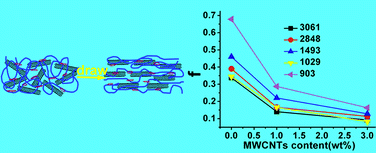Orientation studies of uniaxial drawn syndiotactic polystyrene/carbon nanotube nanocomposite films
Abstract
The response of organic–inorganic nanocomposites under deformation is important for fundamental science and practical applications. Here the orientation evolution of syndiotactic polystyrene (sPS) molecules and


 Please wait while we load your content...
Please wait while we load your content...